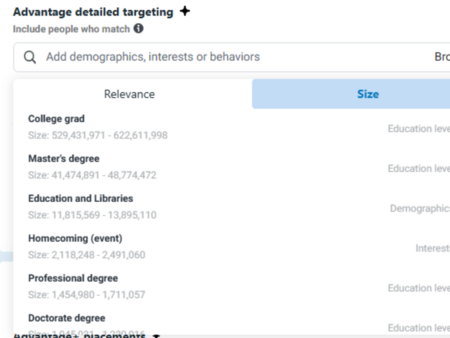TLDR
- The more you spend on PMax, the worse GA4 looks.
We saw up to an 85% ROAS gap in accounts spending heavily on PMax. - Google Ads tracks more touchpoints than GA4.
View-throughs, modeled conversions, and cross-device signals inflate ROAS in Ads—but GA4 doesn’t count most of them. - Attribution models don’t line up.
GA4 defaults to last-click. Google Ads often uses data-driven. If they’re not matched, your numbers will never agree. - Sessions vs. clicks creates a tracking mismatch.
GA4 is session-based. Google Ads is click-based. This leads to underreporting—especially with top-of-funnel traffic. - Low branded spend makes the gap worse.
If branded campaigns are moved into PMax, GA4 stops giving full credit. Accounts with <20% branded spend saw the biggest drops.
If you’ve ever pulled GA4 and Google Ads numbers side by side and thought: “Why is this so far off?” You’re not alone.
Clients ask us about this all the time. “GA4 says ROAS is down. Google Ads says performance is strong”.
Which one’s right? Why are they so different?
We pulled data from over 60 accounts in our portfolio and found a big pattern we couldn’t ignore:
The more you lean into Performance Max (PMax), the further your GA4 revenue gets from what Google Ads reports.
If you’re trying to compare the two platforms side-by-side, it’s going to be frustrating, especially when GA4 shows much lower numbers. And this isn’t just a one-off issue. It’s happening consistently. Here’s what we found:
📉 Patterns We Observed
| % PMax Spend | Avg. ROAS Discrepancy (Google Ads vs GA4) |
| 90–100% | -50% to -85% |
| 60–89% | -30% to -60% |
| <40% | -10% to -40% |
So what’s causing this? Let’s break it down.
1. PMax Spend Drives Bigger Gaps
If you’re seeing huge differences between GA4 and Google Ads ROAS, the first place to look is your PMax budget. The more you lean into PMax, the worse GA4 is going to look.
Via Wordstream
Google Ads reports conversions using all kinds of signals, modeled conversions, view-throughs, cross-device activity, you name it.
GA4 misses a ton of that. It’s session-based and much more conservative by default, especially on upper-funnel traffic where users aren’t converting right away.
Here’s a real example:
- $418k in spend.
- Google Ads reported $2M in revenue (4.86 ROAS).
- GA4? Just $883k in revenue (1.83 ROAS).
- That’s a 62% drop, and it’s not unusual.
As PMax takes over more of the account, GA4 will continue to undercount. So if you’re basing your ROAS targets on GA4 alone, you’re likely undervaluing performance.
2. Attribution Models Don’t Match
If you’ve ever wondered why GA4 is giving way less credit to your paid campaigns, attribution is a big part of it. GA4 defaults to last-click, which means it only gives credit to the very last interaction before someone converts.
Meanwhile, Google Ads often uses data-driven attribution, which spreads credit across multiple touchpoints. So if PMax helped introduce the user, but didn’t close the deal, GA4 may act like it didn’t do anything at all.
This makes PMax look like a waste, even when it’s playing a huge role early in the funnel.
If your client’s GA4 property hasn’t been switched over to data-driven attribution, this could be one of the easiest fixes to start closing the reporting gap.
The takeaway? If you’re comparing ROAS across platforms, but the attribution models don’t match, the numbers never will either.
Here’s how this plays out in the data:
- PMax campaigns often drive early engagement, but GA4’s last-click model ignores that unless it converts on the spot.
- View-throughs and multi-touch paths show up in Google Ads, but GA4 leaves them out unless they lead to a session and conversion.
- Switching to data-driven attribution in GA4 won’t fix everything, but it gives a more balanced look at campaign performance.
- If your client is still on last-click in GA4, they’re probably underreporting paid success, especially for TOF campaigns.
3. Clicks vs. Sessions = Different Tracking Logic
This one catches a lot of people off guard.
Google Ads tracks based on clicks. GA4 tracks based on sessions.
They sound similar, but they’re not the same thing—and that difference can throw off your numbers fast.
Let’s say someone clicks an ad but doesn’t load the site fully, or their session gets cut off by a slow connection, bounce, or privacy setting. Google Ads still counts the click and might track the conversion. GA4? It might not count anything at all.
Here’s how it plays out:
- Google Ads tracks every ad click, whether or not it results in a full session.
- GA4 only counts what happens inside a session, which can get blocked or dropped.
- When sessions and clicks don’t match up, GA4 underreports revenue—even when the ads are doing their job.
So when you’re comparing performance, it’s not just about attribution models or conversions—it’s about how each platform even defines a user interaction. That difference alone can knock a few percentage points (or more) off your reported ROAS in GA4.
4. Low Branded Spend? Expect Bigger Gaps
This is a sneaky one that shows up more often than you’d think.
Accounts with less than 20% branded spend and heavy PMax usage had the biggest ROAS discrepancies between Google Ads and GA4.
Why? Because branded campaigns tend to convert quickly and directly—exactly what GA4’s last-click model loves.
But once you shift branded into PMax and turn off branded text campaigns, things change.
PMax spreads spend across placements and leans more into upper-funnel discovery. That means branded searches might not get tracked as clearly in GA4 anymore, especially if the final click isn’t from your ad.
Here’s how that plays out:
- Branded campaigns usually get more last-click credit in GA4 because the path to conversion is shorter.
- Once you move branded into PMax, GA4 struggles to properly track and credit those users.
- Accounts that rely heavily on branded PMax but don’t adjust reporting expectations will see big gaps in performance.
If you’re not accounting for this shift in how branded traffic is tracked, it’s going to look like your PMax campaigns suddenly stopped working—when really, it’s just GA4 missing the handoff.
What This Means for You
If you’re reporting on GA4 and noticing low ROAS, it’s not always because your campaigns are underperforming.
It’s often just a case of GA4 missing parts of the picture—especially with how PMax behaves.
- If you’re measuring success based on GA4 revenue or ROAS, it’s going to look like PMax is underperforming—even when it’s not.
- You might be making strong optimization decisions based on incomplete data.
- The bigger the role PMax plays in your strategy, the more likely your reports are missing key revenue signals.
- This gap can get you into trouble with reporting, budgeting, and even client trust if expectations aren’t set early.
As this becomes more common, aligning reporting expectations up front is going to be key. Otherwise, you’ll spend more time defending performance than actually improving it.
Next Steps
If you’re seeing a growing gap between GA4 and Google Ads, now’s the time to get ahead of it.
These steps won’t fix every issue, but they’ll help you bring things closer together and make better calls.
- Review your current GA4 attribution settings and match them with your Google Ads setup.
- Talk with your team or client about whether MER might be a more reliable performance metric.
- Make sure everyone understands that GA4 is conservative by design—it’s not a full reflection of your ad performance.
- If branded PMax is part of your mix, prepare for even larger gaps in ROAS tracking.
Taking the time to adjust your tracking setup now will save you a lot of headaches later. And if things still feel off, we’re happy to take a look with you.
Not sure where to start? We’ve been working through this with a lot of clients lately. If your reporting isn’t lining up and you want help sorting it out, reach out and let’s book a time to walk through your data together.





no replies